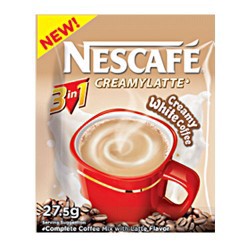Here’s a challenge for all you Design Thinkers that, if successful, could benefit hundreds of millions of consumers, and dramatically reduce the environmental damage being caused by sachet packaging.
Your challenge, should you choose to accept it:
Design a solution that gives consumers access to the benefits of volume consumer goods purchases, including cost savings and reductions in packaging waste, despite the fact they don’t currently have the available cash to make a conventional purchase of a larger packaged product.
In developing countries, consumers can’t afford a whole bottle of shampoo, so they buy a single-use sachet. In countries like Philippines and Egypt, over 60% of shampoo sales are in sachets. 95% of Indian shampoo sales by unit are sachets (although only 60% of sales value). Consumers also buy laundry products, coffee, powdered drinks, hair care, and cosmetic products in single-use sachets.

This phenomenon has been dubbed ‘sachet marketing’ and was introduced by major MNCs such as Procter & Gamble, Johnson & Johnson, and L’Oreal, to reach large but poor D-E market segments with portions that the very poorest consumers could afford to ‘try’. The strategy has become the mainstay of consumer product marketing in large developing economies, and has many benefits both for business and for consumers, but brings with it several worrying side effects.
- The amount of packaging used in sachets is 200–300% more than for larger SKUs, and is resulting in a huge amount of waste which is not recyclable or biodegradable.
- While consumers do not have the ready cash in hand to purchase larger quantities and avail volume pricing, they are actually spending ‘more for less’ over the long term. If they were in a position to purchase a month’s supply of laundry detergent or a 250ml bottle of shampoo, they would actually save a fair bit of money. But they don’t have the cash on hand for it, and so they keep paying higher prices for individual portions.
Furthermore, the prevalence of sachet products entrenches the habit of small purchases, with many outlets not stocking the larger SKUs or offering the full variety. Many consumers now see sachets as the norm and fail to recognise the savings on offer if they were to purchase larger packs.
As I’ve been thinking about the fundamental challenge, I realised that this is a classic situation where Design Thinking could potentially deliver a huge benefit for consumers, businesses, and the environment.
It is critical, however, that we frame this in the right way. We should not assume, for example, that the only way to benefit from volume pricing is by getting people to save enough money to purchase a larger packet. This has already been demonstrated not to work. I’m going to avoid writing in a way which limits your creativity — but the key objectives, in my view, are to reduce the amount of non-recyclable waste and to improve the value for money the consumer obtains.
Some preliminary examples that came up in our own brainstorming were notions of:
- alternative payment mechanisms
- refilling stations for products
- loyalty schemes and incentive programs that gradually move consumers up the package size ladder
- group/community buying
- packaging material enhancements
- dispensers that charge per ‘shot’ (like a self-serve coffee machine)
Of course, many of these will not work in the real world — but hopefully this serves to illustrate the diversity of angles from which you could tackle the problem. To take a Design Thinking approach, you will need to explore human behaviours, beliefs, actions, triggers, at various points in the supply chain from manufacturer through to consumer, as well as elements of product, service, marketing, financing, etc… and come up with a solution which is feasible, viable, and attractive.
I encourage you to share any ideas you have in the comments on this blog post, and together let’s build upon the variety of great ideas that people develop!

